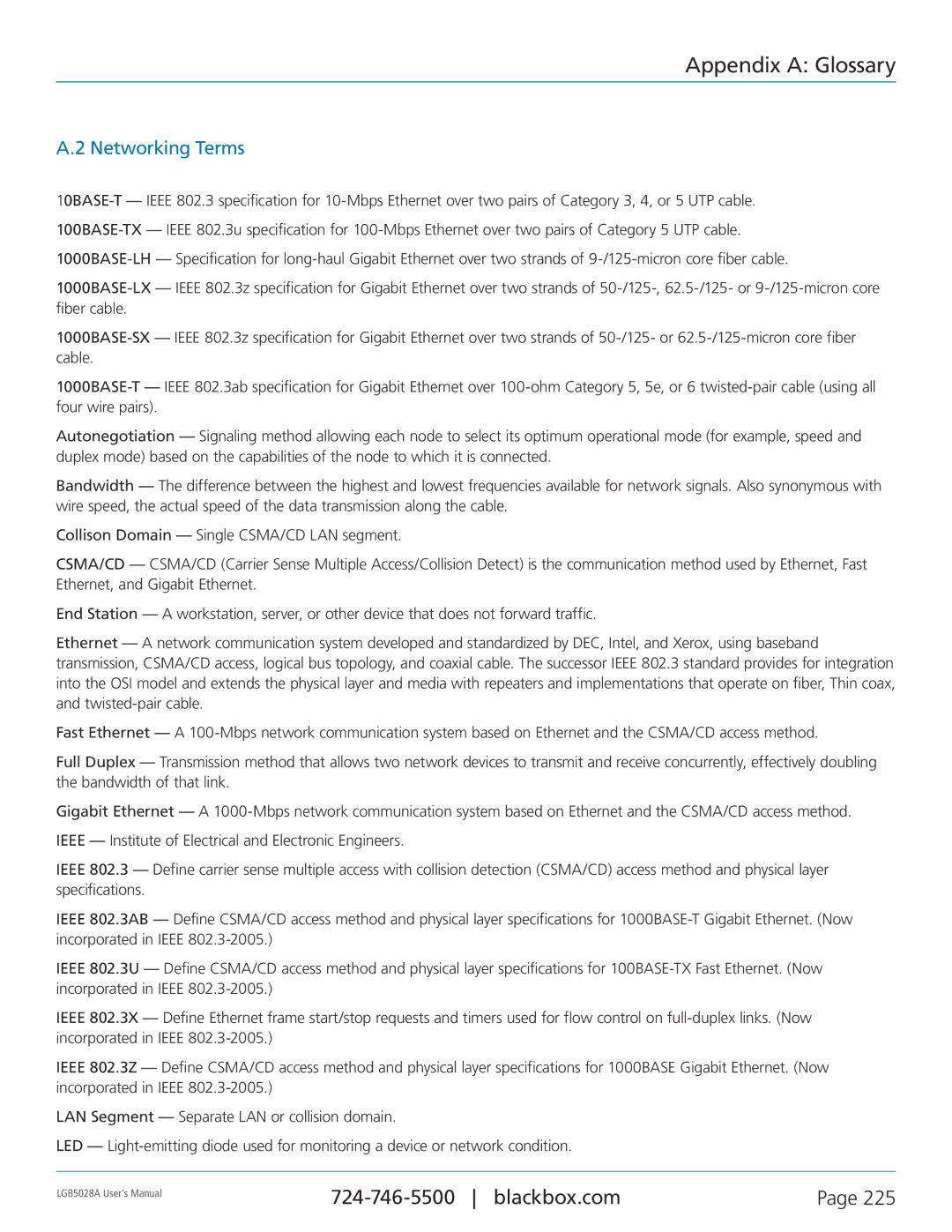
Appendix A: Glossary
A.2 Networking Terms
Autonegotiation — Signaling method allowing each node to select its optimum operational mode (for example, speed and duplex mode) based on the capabilities of the node to which it is connected.
Bandwidth — The difference between the highest and lowest frequencies available for network signals. Also synonymous with wire speed, the actual speed of the data transmission along the cable.
Collison Domain — Single CSMA/CD LAN segment.
CSMA/CD — CSMA/CD (Carrier Sense Multiple Access/Collision Detect) is the communication method used by Ethernet, Fast Ethernet, and Gigabit Ethernet.
End Station — A workstation, server, or other device that does not forward traffic.
Ethernet — A network communication system developed and standardized by DEC, Intel, and Xerox, using baseband transmission, CSMA/CD access, logical bus topology, and coaxial cable. The successor IEEE 802.3 standard provides for integration into the OSI model and extends the physical layer and media with repeaters and implementations that operate on fiber, Thin coax, and
Fast Ethernet — A
Full Duplex — Transmission method that allows two network devices to transmit and receive concurrently, effectively doubling the bandwidth of that link.
Gigabit Ethernet — A
IEEE — Institute of Electrical and Electronic Engineers.
IEEE 802.3 — Define carrier sense multiple access with collision detection (CSMA/CD) access method and physical layer specifications.
IEEE 802.3AB — Define CSMA/CD access method and physical layer specifications for
IEEE 802.3U — Define CSMA/CD access method and physical layer specifications for
IEEE 802.3X — Define Ethernet frame start/stop requests and timers used for flow control on
IEEE 802.3Z — Define CSMA/CD access method and physical layer specifications for 1000BASE Gigabit Ethernet. (Now incorporated in IEEE
LAN Segment — Separate LAN or collision domain.
LED —
LGB5028A User‘s Manual | Page 225 | |
|
|
